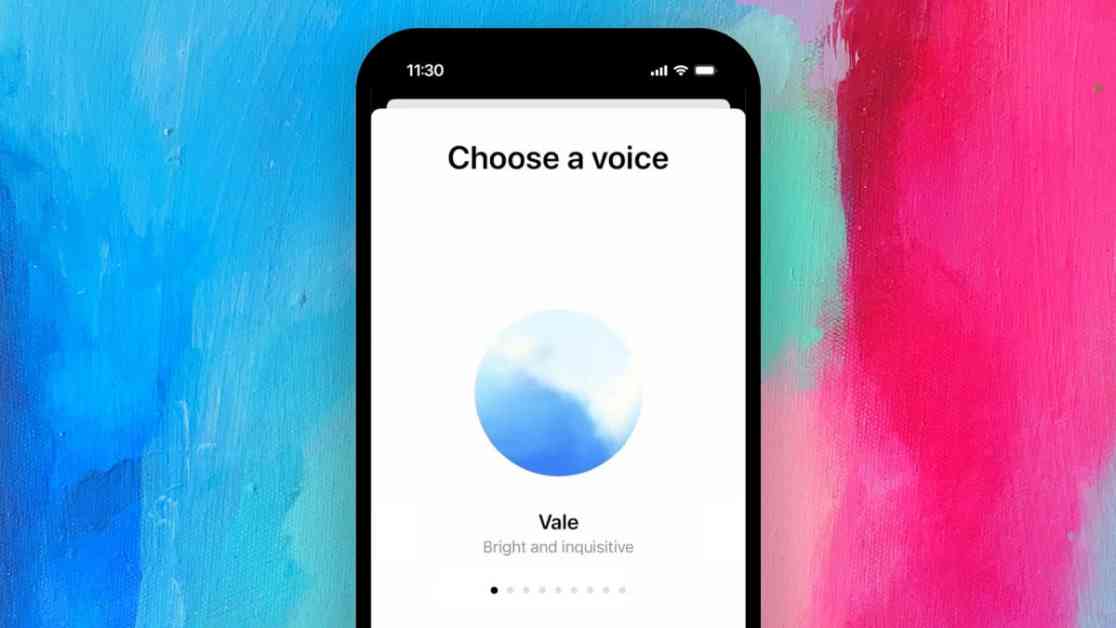OpenAI, the renowned artificial intelligence research laboratory, has recently unveiled an exciting update to its ChatGPT platform. The Advanced Voice Mode (AVM) has been introduced to a wider audience of paying customers, enhancing the user experience with natural voice interactions. This new feature is initially being rolled out to customers in ChatGPT’s Plus and Teams tiers, with Enterprise and Edu customers set to gain access in the coming week.
Revamped Design and New Voices
As part of the AVM rollout, OpenAI has introduced a refreshed design for the feature. Users will now encounter a blue animated sphere representing AVM, a departure from the previous black dots that were used during the technology’s showcase in May. This new visual representation aims to provide a more engaging and intuitive experience for users interacting with ChatGPT.
In addition to the design update, OpenAI has introduced five new voices for users to explore within the ChatGPT platform. The voices—Arbor, Maple, Sol, Spruce, and Vale—join the existing lineup of Breeze, Juniper, Cove, and Ember. With a total of nine voices to choose from, users have a variety of options to personalize their interactions with ChatGPT. Notably, all the voice names are inspired by nature, aligning with the goal of making the user experience more natural and seamless.
Enhanced Features and Functionality
Apart from the new voices, OpenAI has also added several enhancements to ChatGPT’s voice capabilities. Users now have access to Custom Instructions, allowing them to tailor how ChatGPT responds to their prompts. Memory functionality has also been incorporated, enabling ChatGPT to recall past conversations for reference. These customization features aim to empower users to personalize their interactions with ChatGPT and create a more personalized experience.
Moreover, OpenAI has introduced improvements to ChatGPT’s ability to understand accents, making conversations smoother and more efficient. The company claims that the latest enhancements have resulted in a more seamless user experience, with faster response times and improved overall performance. While some glitches were reported during initial testing of AVM, OpenAI assures users that these issues have been addressed and resolved.
Missing Features and Future Developments
Despite the exciting updates to AVM, some features showcased in previous demos are notably absent from this rollout. For instance, the video and screen sharing capabilities introduced during a spring update have not been included in the current release. This feature was intended to enable ChatGPT to process visual and audible information simultaneously, allowing users to engage with the AI system in a more interactive manner. OpenAI has not provided a timeline for when these multimodal capabilities will be launched.
Additionally, the voice named Sky, which was showcased in a previous update and subsequently removed due to a legal threat from actress Scarlett Johansson, is absent from the current lineup. Johansson raised concerns that Sky’s voice bore a resemblance to her own, prompting OpenAI to take swift action to address the issue. The absence of Sky highlights the challenges of developing AI voices that are distinct and free from potential copyright infringements.
Geographical Limitations and Accessibility
While OpenAI continues to expand the availability of AVM to its user base, it is important to note that the feature is not yet accessible in certain regions. Customers in the EU, the U.K., Switzerland, Iceland, Norway, and Liechtenstein are among those currently unable to access AVM. OpenAI aims to address these limitations and make the feature available to a broader international audience in the future.
In conclusion, OpenAI’s launch of the Advanced Voice Mode with enhanced voices and design represents a significant step forward in the evolution of ChatGPT. By introducing new voices, customization options, and improved functionality, OpenAI is striving to create a more natural and engaging user experience. While certain features are still in development and geographical limitations exist, the overall trajectory of ChatGPT’s development points towards a future of more immersive and interactive AI interactions.













